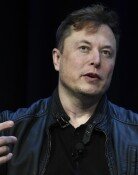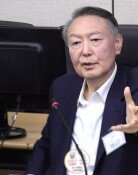[Editorial] The Models of Lula, Cameron and Lee
[Editorial] The Models of Lula, Cameron and Lee
Posted June. 26, 2009 07:31,
Brazilian polling agency CNT says Brazilian President Luiz Inácio Lula da Silva, 64, has an approval rating of 81.5 percent. He is very popular to the extent that the Brazilian people want to revise their constitution to allow him a third term as president. Lula said in an interview with Newsweek that his popularity stems from his demonstration that promoting economic growth and improving income distribution can go hand in hand. Running for the center-left Labor Party in the 2002 presidential election, he shunned the common strategy of anti-market populism. Instead, Lula stuck to market principles focusing on increasing the size of national wealth while enlarging the middle class by supporting the poor. He won over leftists by saying Brazil should give benefits to more people by increasing market efficiency and taking advantage of its abundant resources. He refrained from insulting or fighting those against him, and continued to pursue financial stability, regulatory reform and market opening pledged by Brasilia when it received assistance from the International Monetary Fund.
As a result, Brazil has recently seen its fastest growth in more than 30 years and created jobs. Its public debt dropped from 55 percent of GDP in 2002 to 35 percent this year, exports have increased fourfold, and 20 million low-income people have been lifted out of poverty. The Economist magazine said Bolsa Familia, a welfare program offering families a stipend only when they send their children to school, helped the poor to stand on their own feet and gain a competitive edge.
If the center-left Lula revived Brazil through market principles, Britain`s opposition Conservative leader David Cameron, 42, created a new model for conservatives by combining leftist ideals such as protecting the socially marginalized and paying attention to welfare and the environment. He is the favorite to be the next U.K. prime minister in next years elections, and the U.S. media are urging the Republicans to learn from Cameron.
When Cameron took over the struggling Conservative Party in 2006, he said, We will reduce poverty and bring social justice back. The right is the new liberal. He also pledged to distribute wealth more evenly by maintaining growth with Thatcherism, which lifted the ailing British economy 30 years ago by focusing on market efficiency. He chose pragmatism over ideology to achieve his goals. Cameron is urging Britain to increase the level of national wellness, not GDP, by enhancing the quality of public services by privatizing education, medicine and welfare while asking businesses and unions to move toward a family-friendly environment. This is a center stance that adds the markets touch to the governments function, not just tax cuts or small government.
Brazil and the U.K., which seem to have nothing in common, have the same problem: public education reform. The Economist said Korea and Brazil were similar in per capital income in the 1970s, but Koreas figure now is four times more than Brazil`s. The biggest obstacle in reforming Brazilian education is teachers unions that resist reform, including performance-based evaluations and government policies that let them teach as is written in textbooks. Without improving public education, a country will find it tough to join the ranks of developed countries.
In February, a Cambridge University admissions officer said, The poor academic results of (U.K.) public school graduates are due to bad teachers. His comment shocked the U.K. So the goal of Camerons educational reform is enhancing competitiveness by encouraging competition between schools and allowing school choice for students.
Korean education might be the envy of Brazil but is now taking backward steps. Korean educational policy is being swayed by teachers unions, and government control, regulation and focus on absolute equality are leading to lower academic achievement. A good example is the ban on special purpose schools from considering a students academic achievement. The policy is intended to reduce the cost of private education, which greatly burdens low-income and middle-class households, but implementation is a problem. So how will special purpose schools select students other than on their academic performances?
Though the global economic crisis has raised doubts over market economics, the government still plays a key role in protecting the socially marginalized while increasing market efficiency. Korea needs highly skilled talent in the knowledge-based industry if it wants to increase domestic consumption and exports by using market dynamics. To do so, it must raise the quality of education. The government must improve the social safety net for those lagging behind, distribute benefits more evenly, and meticulously design a system that gives people the chance to work.
Though the Lee Myung-bak administration has tried to find the right economic model in the wake of the economic crisis, the national agenda it set a year and a half ago seems little changed. The problem is that the concept of center might make things complicated when it means the middle of Koreas right and left. The left that accepts the basic value of a free democracy, market economy and the rule of law is fine, but the majority of Korean leftist groups believe they can do whatever they can if they can overhaul the administration. The term center should not be misunderstood as the middle of the arithmetic mean, or at least that kind of intention. Being in the center is a means to an end, not the end itself.



![쓸개 파열로 “사흘 남았다” 판정받은 시인…18년뒤 “너를 아껴라” 속삭여[손효림의 베스트셀러 레시피]](https://dimg.donga.com/c/138/175/90/1/wps/NEWS/IMAGE/2026/01/08/133113134.1.jpg)

![“‘휴지심’ 아직도 버려?” 0원으로 집안 환경 바꾸는 법 [알쓸톡]](https://dimg.donga.com/c/138/175/90/1/wps/NEWS/IMAGE/2026/01/07/133110227.3.png)

